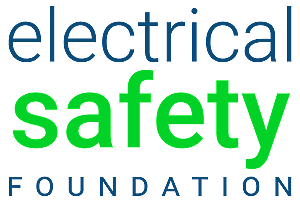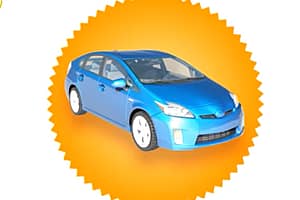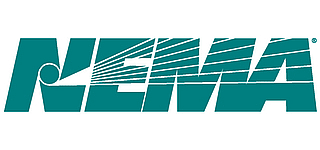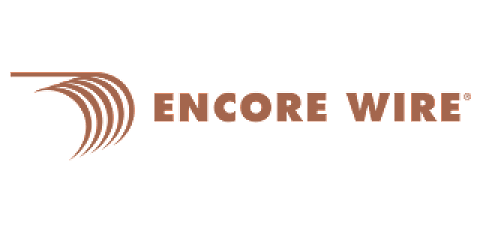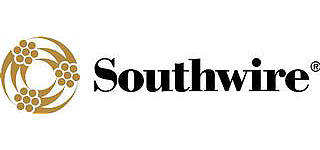Solar Power
What is Solar Power?
Quite literally, solar power is power or energy derived from sunlight. Sunlight can be directly utilized, converted in electrical energy, or converted into mechanical energy. Solar power is an important source of sustainable alternate energy.
Three common types of solar power are:
- Passive Solar – Passive solar technologies capture sunlight to heat and light buildings, allowing energy costs to remain low. Unlike active solar systems, passive solar design does not involve the use of mechanical or electrical devices, such as fans or pumps. A common structure that utilizes passive solar energy is a greenhouse. Just as with a greenhouse, schools, homes, and office buildings can take advantage of passive solar energy by including more windows in their design, using materials that help trap or pass heat, and constructing buildings at strategic angles so they will receive the most natural sunlight throughout the day.
- Photovoltaic (“Solar Cells”) – The Photovoltaic cell, also referred to as a PV device or “solar cell,” has the ability to directly convert solar energy into electrical energy. Once the electrical energy is generated, it has multiple commercial and residential uses. From wrist watches and small calculators to electric water pumps, photovoltaic cells can prove to be a useful power source.
- Solar Thermal (Electric Power Plants) – Unlike photovoltaic energy, solar thermal power is not generated directly from sunlight. Instead, the sun’s rays are concentrated and used to heat special fluids, which are then passed through pipes to heat water. The heated water produces steam which will provide mechanical energy through use of a turbine. That mechanical energy can then be converted into electrical energy by connecting the turbine to a generator. Various applications exist for power derived from solar thermal energy, including heating swimming pools, electric water heaters, and supplemental heating for homes.
Residential Considerations and Safety Precautions
Many homeowners find solar power advantageous for both its cost effectiveness and environmental friendliness. Before you decide to install a solar power system for your home, there are a number of important considerations:
- Do your homework. Research the various solar power systems and installation options before investing.
- Assess whether your property is a good site for solar. In general, you will need an open rooftop space or land that is free of shade for at least five hours per day. Wind speeds, heavy snow, and salt water can also affect your solar array.
- Investigate local building codes, zoning ordinances, covenants, and special regulations pertaining to solar power systems.
- Check with your local utility company to determine the requirements and costs or rebates for connecting your system to the grid.
- Before adding an active solar system to your home, have your home electrical system evaluated by a licensed, qualified professional to ensure it can support this new technology.
- Always hire a professional to install and repair solar panels at your home or workplace. Specific licensures and qualifications must be obtained before attempting to install solar equipment.
- Building, electrical, and plumbing codes also apply to solar power installations. Ensure your installer requests the appropriate permits and follows all applicable codes.
- Solar power systems present unique safety challenges for fire fighters. In the event of a fire, inform all officials of the use of solar panels as well as identify the type used. This will help them mitigate the risks.
Did you know?
If you generate your own electricity using a renewable energy source, like solar or wind energy, you may be able to sell your excess electricity to the utility company. Requirements vary by state and utility.
Wind Power
Like many other emerging technologies, wind power has become more mainstream in recent years. New technologies have decreased the cost of producing electricity from wind, and growth in wind power has been encouraged by the implementation of incentives for renewable energy products.
What is Wind Power?
The power of the wind is harnessed and transformed into electrical energy through the use of wind turbines. These turbines function very similarly to the childhood pinwheel toy: wind blows over the blades of the wheel creating lift and causing them to turn. The blades are connected to a shaft which is connected to and turns an electric generator, thus converting kinetic energy into electric energy.
Wind power can provide electricity in a variety of different situations. Large-scale operations are used to provide power for the utility electrical grid. Wind power systems can also provide a supplemental power source for grid-connected industrial, commercial, and residential locations. Stand-alone systems provide electricity for remote homes and businesses that are not serviced by the utility grid.
Residential Wind Power
Now that residential wind power systems are readily available, more homeowners are considering an investment in this technology. Many see it as a method of insulating themselves from fluctuating electricity costs and also reducing their home’s carbon footprint. There are, however, a number of aspects to think about before deciding to install a wind power application for your home:
- Is there enough wind in your area? An average annual wind speed of at least 10 miles per hour is considered necessary to make a small wind system economical.
- Make sure your local building codes and zoning ordinances allow for wind turbine installations.
- Check with your utility company to determine the requirements and cost for connecting your system to the grid.
- Determine your household electricity needs and purchase a correctly-sized wind turbine.
General Safety Considerations
- Break-down of materials – Turbines are only built to withstand certain strengths of wind.If subjected to winds in excess of those it was built for, the materials may begin to break down, resulting in portions of the blade flying great distances and posing the threat of harm.
- Fire – Lighting is one of the main causes behind turbine fires. Electrical malfunction, paired with the presence of combustible materials, such as insulation and lubricants, can also present serious fire hazards.
- Ice – Since large wind turbines operate at higher altitudes, the colder temperatures can cause ice to form on the blades when it rains. This ice can then be flung great distances as the blades spin, creating a safety hazard.
- Overhead power lines – People working in and around wind farms need to pay careful attention to overhead power lines. To prevent electrocution, all employees, tools and equipment should maintain a distance of at least ten feet from power lines, which carry extremely high voltage.
- Wildlife – Not only do wind farms take up habitat space for some species, they also can interfere with the migratory routes of birds and bats and pose physical danger to them if they fly into the turbines’ paths.
But what happens if there’s no wind?
For power grids that are dependent on wind, power outages will not occur in the event that the wind is not blowing. On a calm day, the turbines won’t be able to produce power, but electricity will still be available from other power sources. Conversely, wind turbines typically don’t produce electricity when wind speed exceeds a certain threshold, and have a device that prevents the blades from turning when the wind exceeds the limit of the turbine.
Wind Farms
In large scale wind power operations, wind turbines are often grouped together into a single wind power plant, known as a wind farm, and generate bulk electrical power. Electricity from these turbines is fed into a utility grid and distributed to customers.
Did you know?
In 2010, wind turbines generated enough electricity to power about 8.7 million U.S. households for a year.
Smart Grid and Smart Meters
Electricity is a critical part of modern lives, but it is often taken for granted. How does the electricity you need to watch your TV or wash your clothes get to your home? It travels through the electrical grid, an interconnected network of generating plants, transmission lines, and transformers.
What is Smart Grid?
Smart Grid refers to an improved electricity delivery system that includes monitoring, analysis, control, and communications capabilities. These “smart” technologies allow utilities to deliver electricity to homeowners and businesses as efficiently and economically as possible.
Why do we need a “smarter” grid?
In many areas of the United States, the existing electrical grid is getting old and worn out. In addition, population growth in some areas has caused the entire transmission system to be over used and fragile. Smart Grid technologies can improve the reliability, security, and efficiency of the electrical grid. A “smarter” grid will also allow for better integration of emerging technologies like solar power systems and electric vehicle charging stations.
Residential Smart Meters
Smart grids provide a cost and energy efficient method for managing power on a large scale, but smart meters take that technology a step further, constantly monitoring and recording the amount of energy flowing to each specific customer. Unlike traditional meters that provide only one-way communication to the utility, smart meters allow for two way communication between the utility and the customer, providing valuable information to help customers better manage their energy use to save money and conserve energy.
Smart meters are provided and installed by your local utility company in place of their traditional meter. Check with your utility regarding their plans for smart meter upgrades.
Identified Challenges
Privacy – Instead of traditional one-way communication between the generation plant and the home or business, smart meters allow for two-way communication with the smart grid. Some are concerned that this type of communication, which involves the sharing of personal information including when you are home and what you are doing, is a violation of privacy.
Encryption– As with other wireless technologies, smart devices are potentially vulnerable to hacking and other cyber-attacks. Utility companies are taking steps to ensure the security of smart meter data through encryption and other cyber security measures, adapting security protocols developed for the banking and defense sectors.
Radio Frequency (RF) Exposure– Household electronic devices, such as cell phones, wireless routers, and smart meters, produce RF emissions. Extremely high levels of RF exposure can be harmful to your health. In the U.S., the Federal Communications Commission (FCC) regulates the amount of RF energy that electronic devices, including smart meters, are allowed to emit in order to protect public health. Properly installed and maintained wireless smart meters result in much smaller levels of RF exposure than other common household devices, particularly cell phones and microwaves.
Costs– Upgrading substations, lines, poles, meters, and communications systems, in addition to replacing aging equipment, is an expensive undertaking. Estimates for the deployment of Smart Grid technology in the U.S. range from $338 billion to $476 billion over the next 20 years. There is concern that these costs will ultimately be borne by the consumer.
Safety Considerations
Whether you have a traditional mechanical meter or a smart meter, you should not attempt to alter, service/repair or remove the meter. Installation and service should only be performed by utility company personnel or their approved contractors.
Keep the area around your meter and electrical panel clear for ease of access.
American Recovery and Reinvestment Act
On February 17, 2009, President Obama signed the American Recovery and Reinvestment Act of 2009. This economic recovery package included $4.5 billion for activities to modernize the electric grid with smart grid technologies.
Did you know?
Within the next 4 years, approximately 65 million smart meters are expected to be installed across the country—that’s more than half of all U.S. households.
